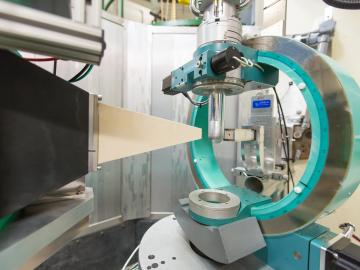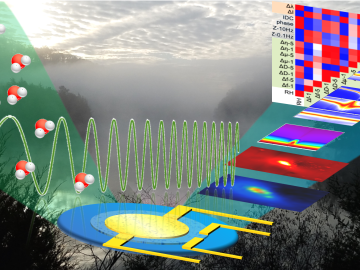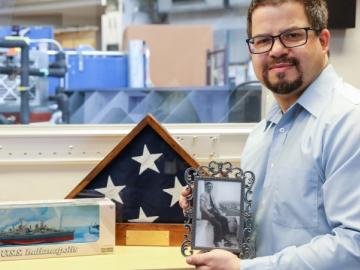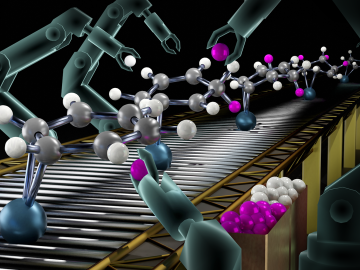
Filter News
Area of Research
News Type
News Topics
- (-) Bioenergy (9)
- (-) Biomedical (17)
- (-) Computer Science (32)
- (-) Environment (20)
- (-) Exascale Computing (3)
- (-) Grid (6)
- (-) Isotopes (4)
- (-) Machine Learning (5)
- (-) Nanotechnology (5)
- (-) Neutron Science (19)
- 3-D Printing/Advanced Manufacturing (14)
- Advanced Reactors (10)
- Artificial Intelligence (7)
- Big Data (11)
- Biology (6)
- Biotechnology (1)
- Chemical Sciences (2)
- Clean Water (2)
- Composites (1)
- Coronavirus (16)
- Critical Materials (1)
- Cybersecurity (3)
- Energy Storage (15)
- Frontier (1)
- Fusion (13)
- High-Performance Computing (1)
- Materials Science (21)
- Mathematics (2)
- Mercury (2)
- Microscopy (6)
- Molten Salt (1)
- Nuclear Energy (23)
- Physics (9)
- Polymers (3)
- Quantum Science (6)
- Security (2)
- Space Exploration (1)
- Summit (10)
- Transportation (10)
Media Contacts

A UCLA-led team that discovered the first intrinsic ferromagnetic topological insulator – a quantum material that could revolutionize next-generation electronics – used neutrons at Oak Ridge National Laboratory to help verify their finding.

An all-in-one experimental platform developed at Oak Ridge National Laboratory’s Center for Nanophase Materials Sciences accelerates research on promising materials for future technologies.

Combining expertise in physics, applied math and computing, Oak Ridge National Laboratory scientists are expanding the possibilities for simulating electromagnetic fields that underpin phenomena in materials design and telecommunications.

The 75th anniversary of the final voyage of the USS Indianapolis and her brave crew is Thursday, July 30. The US Navy warship was on a top-secret mission across the Pacific Ocean to deliver war materials that marked the conclusion of the Manhattan Project.

ORNL researchers have developed an intelligent power electronic inverter platform that can connect locally sited energy resources such as solar panels, energy storage and electric vehicles and smoothly interact with the utility power grid.

From materials science and earth system modeling to quantum information science and cybersecurity, experts in many fields run simulations and conduct experiments to collect the abundance of data necessary for scientific progress.

Researchers at Oak Ridge National Laboratory developed a method that uses machine learning to predict seasonal fire risk in Africa, where half of the world’s wildfire-related carbon emissions originate.

Ada Sedova’s journey to Oak Ridge National Laboratory has taken her on the path from pre-med studies in college to an accelerated graduate career in mathematics and biophysics and now to the intersection of computational science and biology

COVID-19 has upended nearly every aspect of our daily lives and forced us all to rethink how we can continue our work in a more physically isolated world.

Scientists have found a new method to strategically add deuterium to benzene, an aromatic compound commonly found in crude oil. When applied to the active ingredient of drugs to incorporate deuterium, it could dramatically improve the drugs’ efficacy and safety and even introduce new medicines.


